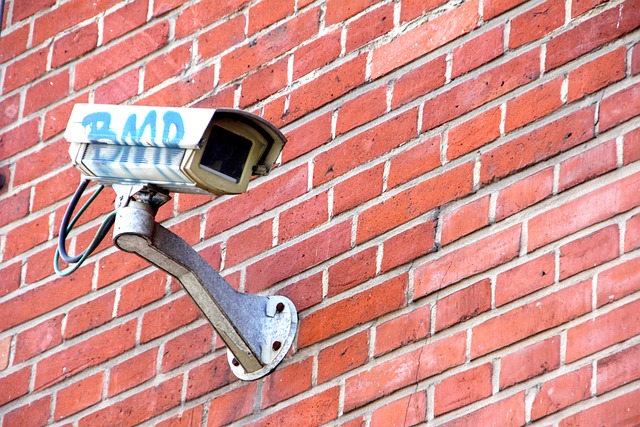Live video streaming has experienced explosive growth, driven by advancements in mobile and desktop apps that make content creation accessible worldwide. This trend is evident across sectors, as live streaming offers dynamic, engaging experiences attracting global audiences. Improved internet accessibility and data speeds further fuel this trend. Integrating video analytics for security into live streaming platforms enhances safety through real-time detection of unauthorized access and suspicious behavior using machine learning algorithms. Encryption protocols, strong authentication, regular audits, AI-driven anomaly detection, and blockchain technology are key future trends aimed at bolstering the security and reliability of live streaming environments.
Live video streaming has surged globally, revolutionizing how we connect and share experiences. This article explores the dynamic landscape of live streaming via mobile and desktop apps, delving into its rapid growth and impact. We examine how these platforms facilitate seamless streaming while highlighting the critical role of video analytics in enhancing security measures. Additionally, best practices and future trends in live streaming security are discussed, providing insights for both users and professionals alike.
The Rise of Live Video Streaming: A Global Phenomenon
In recent years, live video streaming has experienced a phenomenal rise, transforming how we connect and communicate globally. The advent of mobile and desktop apps has democratized content creation, enabling anyone with an internet connection to become a broadcaster. This shift is evident in various sectors, from personal interactions to professional events, as live streaming offers a dynamic and engaging experience that captivates audiences worldwide.
The popularity of live video streaming is underscored by robust growth in user numbers and viewing habits. Video analytics for security purposes reveal increasing traffic on streaming platforms, indicating a growing appetite for real-time content. This trend is further fueled by advancements in technology, such as improved internet accessibility and higher data speeds, which facilitate seamless streaming experiences across different devices.
Mobile and Desktop Apps: Enabling Seamless Streaming
Mobile and desktop apps have revolutionized live video streaming, offering users unparalleled convenience and accessibility. These platforms enable viewers to tune in from anywhere, at any time, making it easier than ever to stay connected with content creators and events worldwide. The integration of robust video analytics for security purposes further enhances this experience. By employing advanced algorithms and real-time monitoring, these apps ensure smooth streaming without buffering or interruptions, providing a seamless visual journey for users.
The versatility of mobile and desktop apps allows content creators to reach broader audiences, fostering interactive communities and engaging experiences. Whether it’s hosting live concerts, virtual conferences, or personal vlogs, these applications empower individuals to share their stories and connect with others in meaningful ways. Moreover, the integration of video analytics for security adds an extra layer of protection, safeguarding both user privacy and content integrity during streaming sessions.
Integrating Video Analytics for Enhanced Security
Integrating video analytics into live streaming platforms enhances security measures significantly. These advanced systems employ machine learning algorithms to detect and flag unusual activities, such as unauthorized access or suspicious behavior, in real-time. By analyzing visual data, they can identify patterns, track movements, and recognize faces, thereby improving overall safety during live streams.
Furthermore, video analytics for security enables intelligent risk assessment by identifying potential threats like cyberattacks or harassment. This technology allows broadcasters to promptly respond to these issues, ensuring a safer environment for both content creators and viewers. Real-time alerts and automated moderation tools empower administrators to take necessary actions, making live streaming platforms more secure and reliable.
Best Practices and Future Trends in Live Streaming Security
As live streaming becomes increasingly popular, ensuring robust security is paramount to protect content creators and viewers alike. Best practices include employing encryption protocols like HLS (HTTP Live Streaming) or DASH (Dynamic Adaptive Streaming over HTTP), which scramble video data, making unauthorized access more challenging. Additionally, implementing strong authentication mechanisms, such as token-based access controls, ensures only authorized users can stream or view content. Regular security audits and updates are crucial to address emerging threats.
Future trends in live streaming security will likely involve advanced video analytics for security purposes. This includes AI-driven anomaly detection systems that can identify suspicious activity in real time, such as unauthorized camera access or unexpected viewer behavior. Blockchain technology could also play a role by providing decentralized, tamper-proof logs of streaming events, enhancing transparency and accountability. These innovations aim to create a safer and more secure live streaming environment.
Live video streaming has transcended borders, becoming a global phenomenon that seamlessly connects people across different platforms. With mobile and desktop apps playing a pivotal role, users now enjoy uninterrupted viewing experiences. Integrating video analytics for security further enhances this technology, ensuring safe and reliable interactions. As we look ahead, adopting best practices and staying abreast of future trends in live streaming security will be key to maintaining a robust digital environment.
